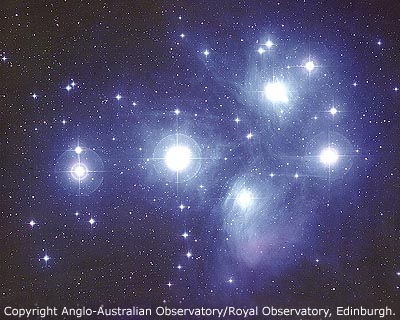Dust doesn't have to come just in thick clouds, it can also be spread diffusely throughout space.
What does dust do to star light? Several things:
- it absorbs light
- it reddens light
- it scatters light
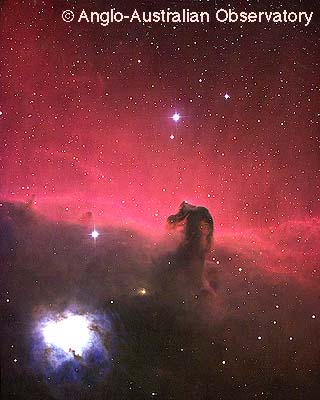
| When we look in different directions
of the sky, we often see dark "holes" in the distributions of stars. These
are not gaps where there are no stars, but instead are interstellar dust clouds.
Dust doesn't have to come just in thick clouds, it can also be spread diffusely throughout space. What does dust do to star light? Several things:
|

|
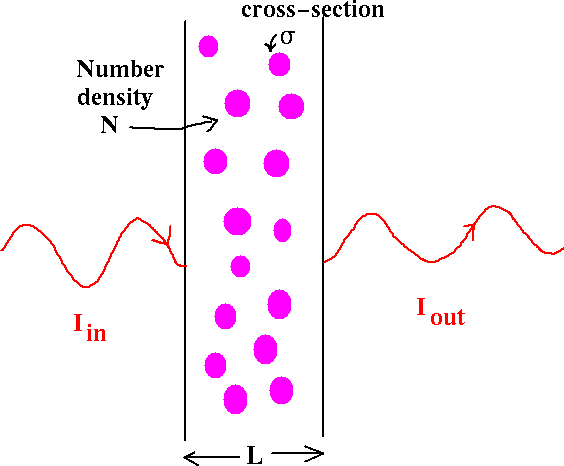
And we have
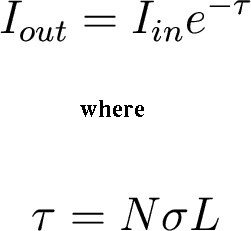
Rewrite as
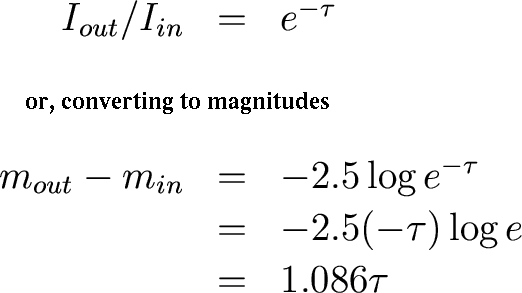
if we define extinction as
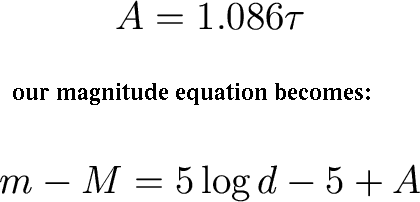
So if we measure the B-V color of a star, we will be measuring a redder color than the true B-V color (usually called (B-V)0). We define the reddening as
Now it seems reasonable to expect that the more extinction there is, the more reddening there will be. In fact, studies have shown that the extinction and reddening are related by:E(B-V) = (B-V) - (B-V)0
So if we know what the reddening is, we can calculate the extinction and correct our magnitude equation. How could we figure out the reddening?AV=3.2E(B-V)
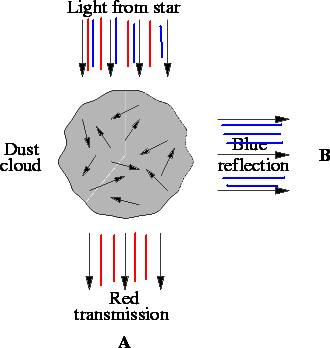
So we see not only dark clouds, but reflection nebulae as well:
